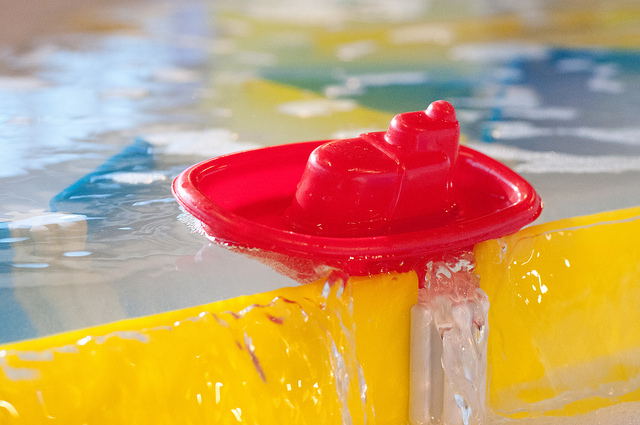
In the post-Cold War era, western navies have continued to seek the highest levels of technology and capability in an environment of declining defence budgets. This has caused a reduction in overall fleet sizes as unit costs increase, and the creation of ‘silver bullets’ in fleets that rely on a smaller number of more capable platforms. At the same time naval vessels face increasingly lethal and numerous anti-surface weapons. So the costs of losing even one vessel may be more significant than we imagine.
Losing ships is a likely (and therefore expected) part of naval conflict, but losses affect navies of differing sizes to different degrees. Most modern navies haven’t lost a ship to enemy action since World War 2 so they haven’t had to deal with the consequences first-hand in a long time. However, the Falkland Islands war in 1982—one of the few examples of naval conflict in the missile age—provides some interesting insights.
The UK deployed 37 warships (25 surface combatants, six amphibious ships and six submarines) as a part of the taskforce assembled to take back the Falkland Islands, supplemented by auxiliaries and civilian vessels. The Royal Navy (RN) at the time consisted of 92 combat vessels, so 40% of its combat vessels were sent to the South Atlantic. During the conflict the RN lost four combat vessels—two destroyers and two frigates—to Argentine air and missile strikes. Those losses accounted for 16% of its deployed combat strength but only 4% of its overall fleet combat strength. Additionally 11 combat vessels from the task force were damaged, accounting for 30% of its total deployed combat strength and 44% of its deployed surface combatant strength. Keep in mind, the losses inflicted upon the RN came from an Argentine military operating at the edge of its operational range, and using anti-ship missiles (and unguided bombs) that aren’t nearly as accurate as their modern-day counterparts.
If the UK was to deploy a similar task force today—assuming it can deploy a similar percentage of the fleet as it did in 1982—it could assemble a meagre task force of 13 combat vessels from an overall fleet of 32. Assuming losses in the same proportion as 1982, one or two vessels would be sunk and another four damaged, which would leave the task force with only 8 undamaged vessels. In fact, the UK may not be able to conduct such an operation today with such low numbers.
For smaller navies such as the Royal Australian Navy, taking similar losses would be devastating. It’s unlikely that the RAN would unilaterally send a naval task force into a high-end conflict. However running the ruler over the fleet using the percentages noted above is illustrative of the risks that naval capability planners across the board are taking by investing in ‘silver bullets’.
The RAN currently operates 19 combat vessels: two LHDs, three guided missile frigates (FFG), eight helicopter frigates, and six submarines. If the RAN were to deploy a task force of similar proportion to the one sent by the RN to the Falkland Islands, it would likely consist of eight ships. Assuming the same loss rate, the Australian task force would lose one ship outright and 2 or 3 vessels would be damaged, leaving around four or five vessels to continue operations. Those numbers may even be optimistic, as a small task force means there are fewer ships providing defensive cover. That leaves little margin to absorb the loss and achieve objectives.
Applying those loss figures to specific classes of RAN vessels exposes the inherent vulnerability of small navies. If one submarine or FFG is lost, the task force may lose its air or subsurface cover and the RAN would lose at least one-sixth or one-third respectively of the gross total fleet of that platform (and that’s assuming that every vessel is available all of the time). If the LHD is sunk, or just damaged enough to cause its withdrawal, then the task force will no longer have an amphibious capability, likely leading to mission failure, and the RAN has lost half of the amphibious capability provided by the LHDs (plus the personnel, aircraft and equipment on board).
Admittedly, comparing naval capability from the early 1980s to now, and the RN to the RAN, isn’t perfect. Today’s ships are more capable, have improved countermeasures, and are better able to cooperate with supporting capabilities such as airborne surveillance. But anti-surface weaponry is now more lethal, accurate and numerous than it was in 1982; these weapons also have the advantage of being significantly faster and more manoeuvrable than their targets, which makes defending against them more difficult. In a world of small navies where each vessel is incredibly capable and quite expensive, losing just one vessel can undermine the chances of success.
Quantity does have a quality of its own; however there’s a trade-off between numbers and capability that must be met. But that’d require another 800 words…

